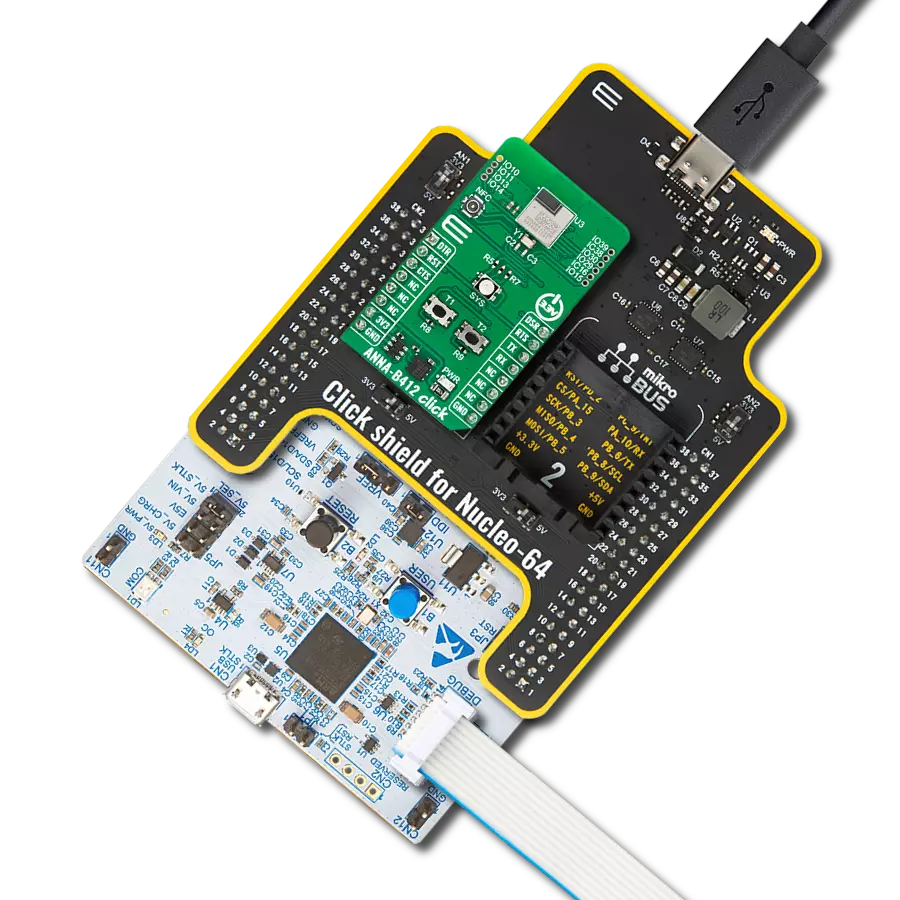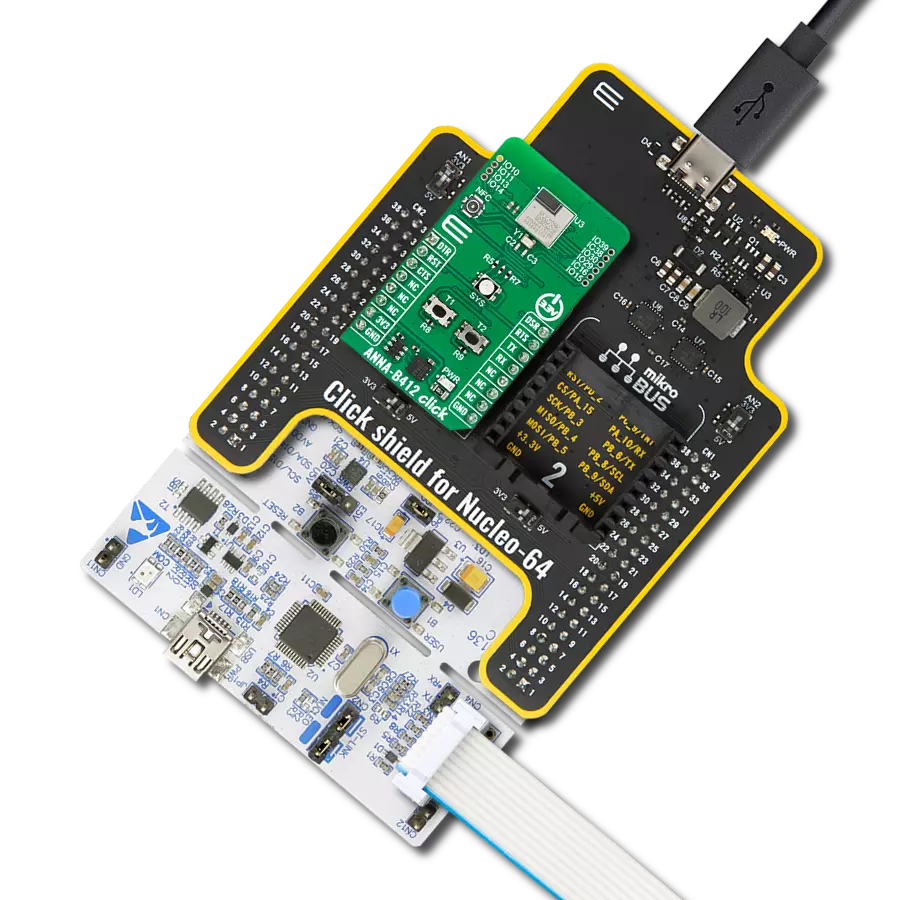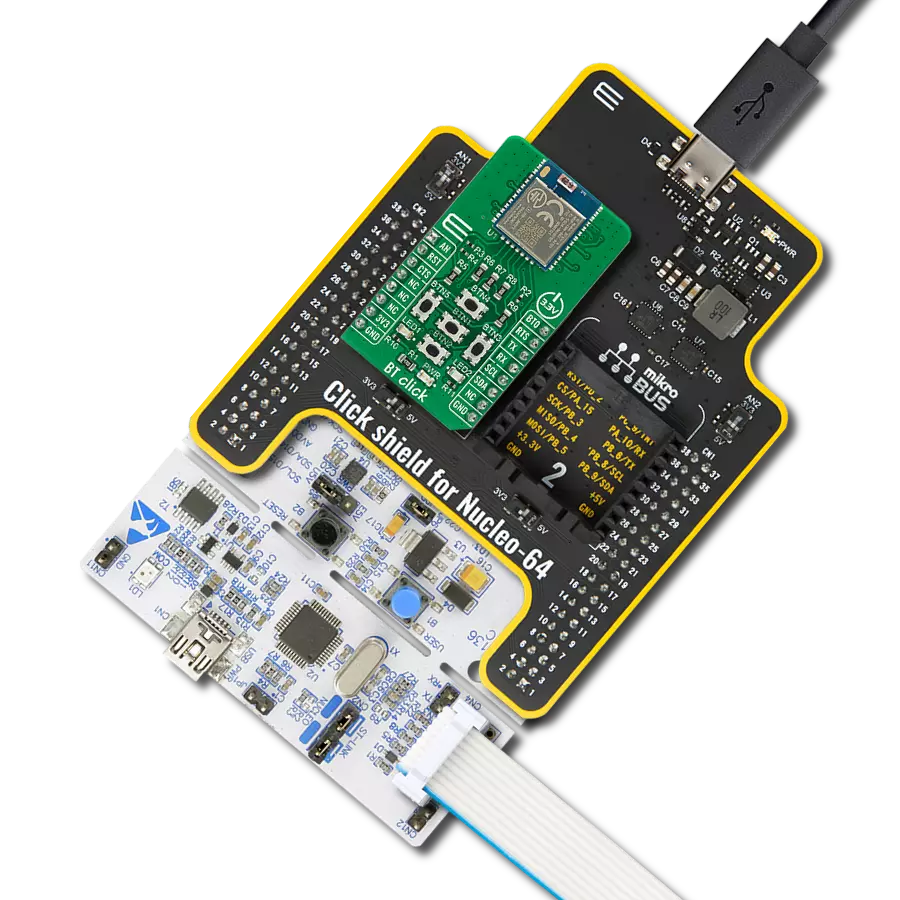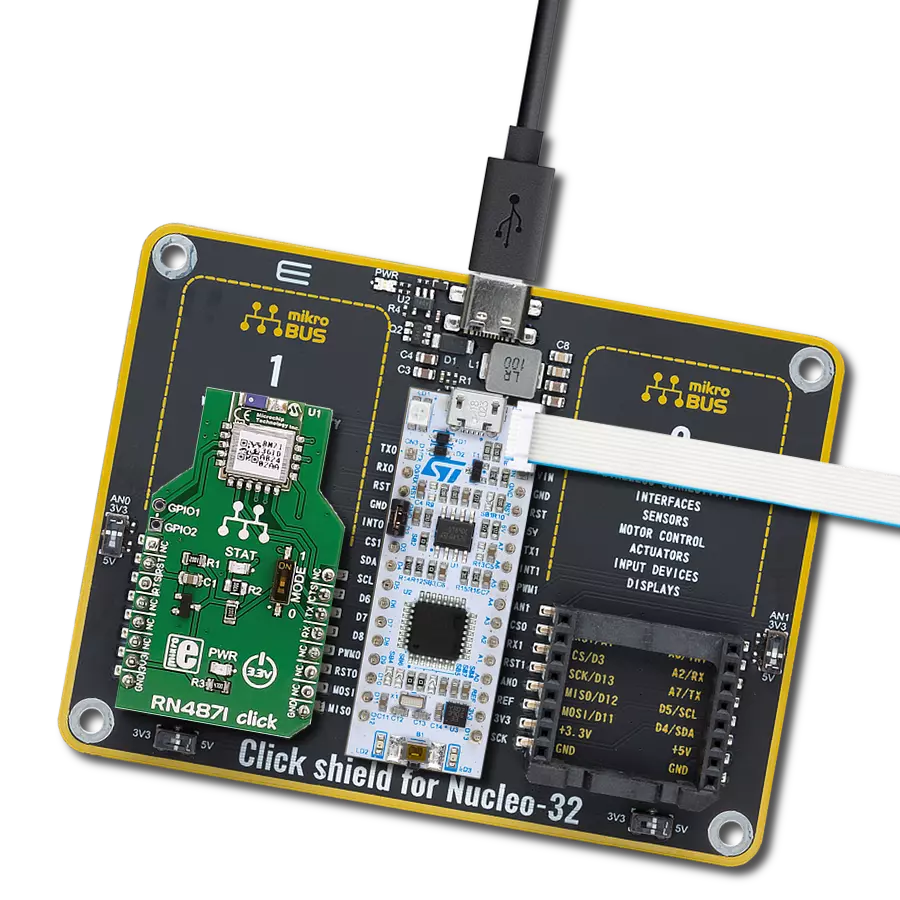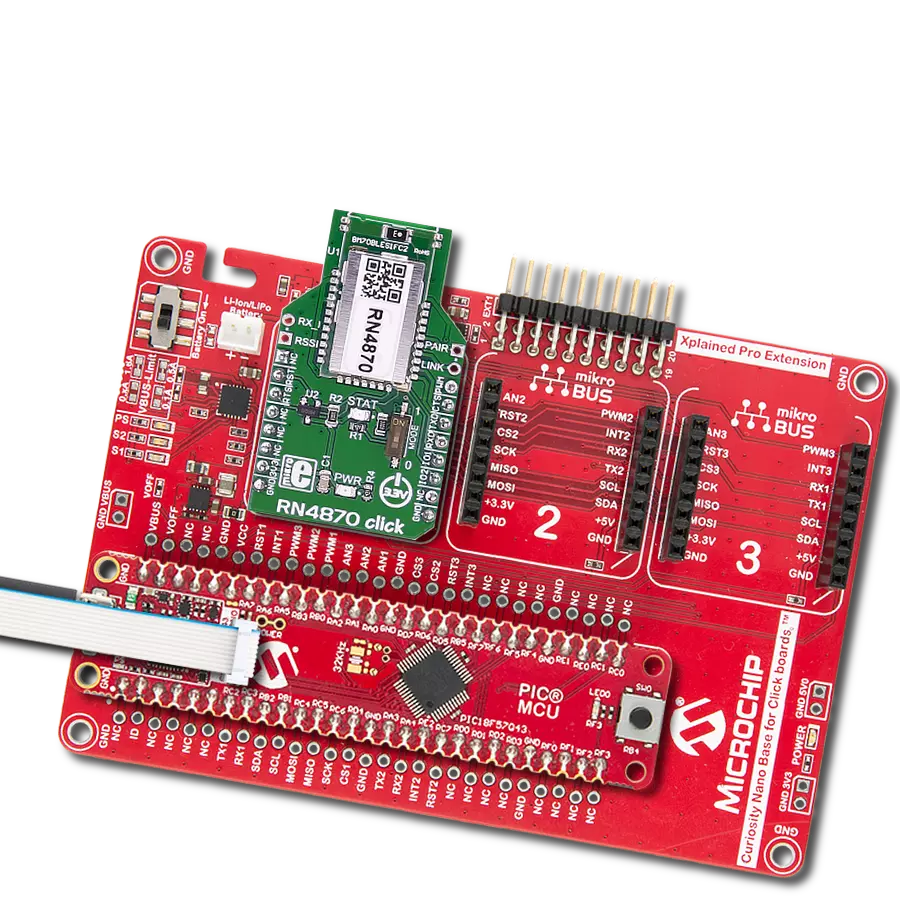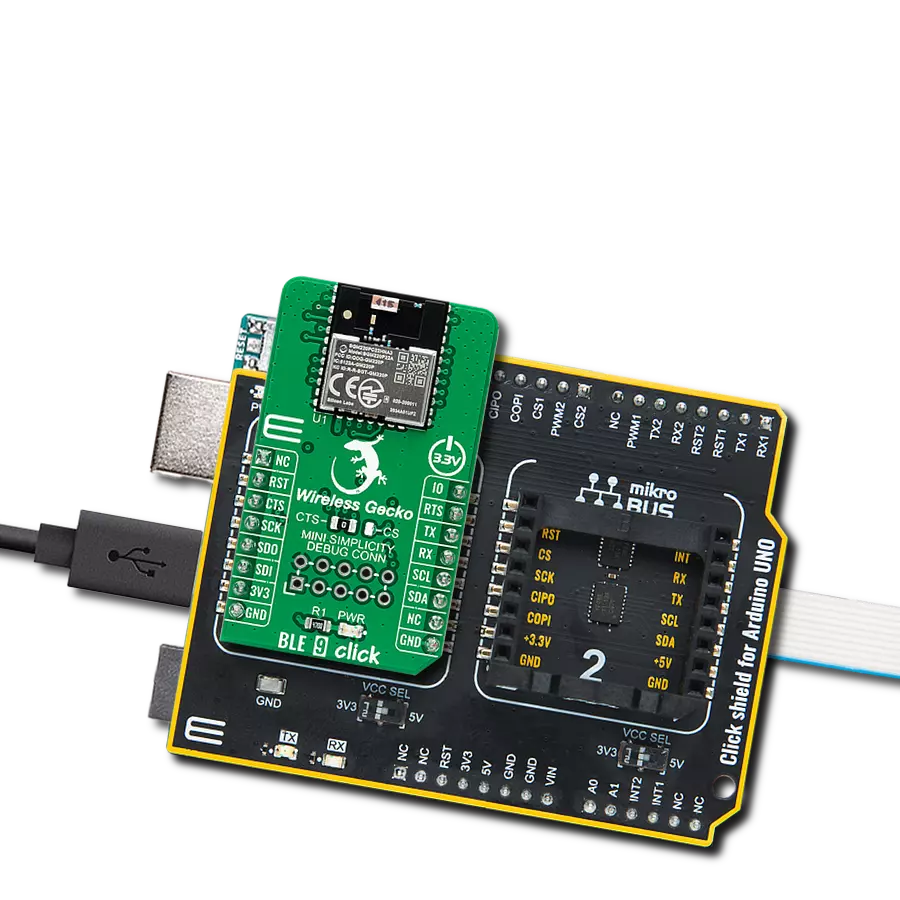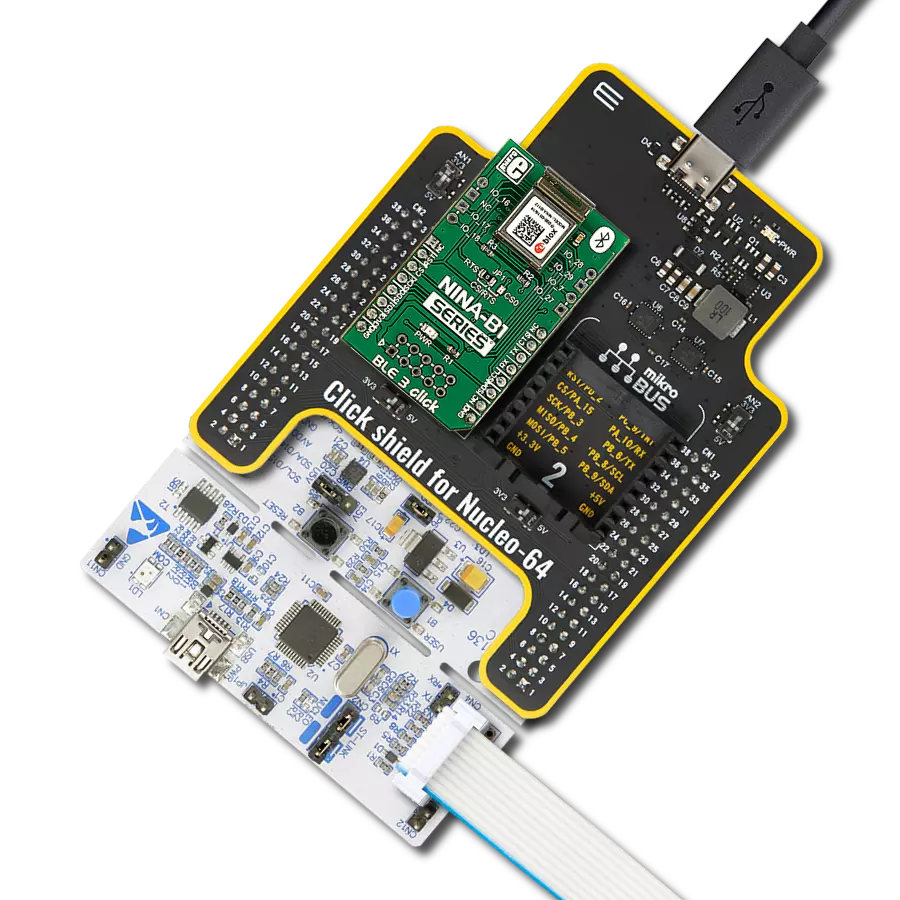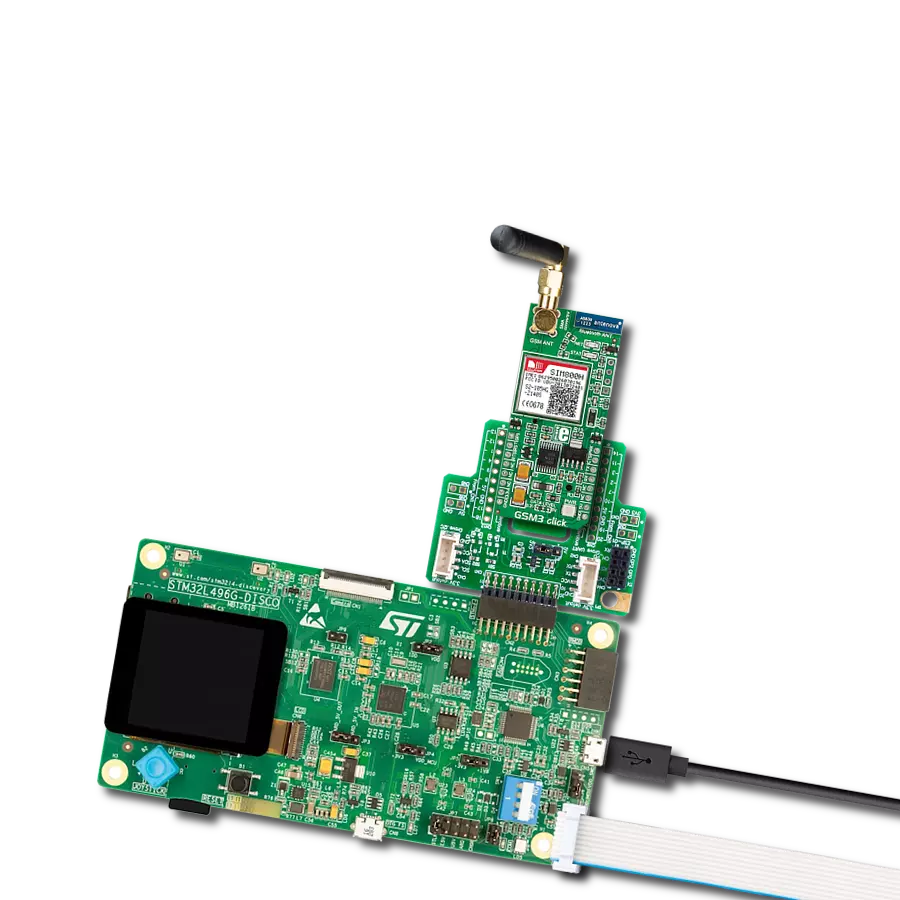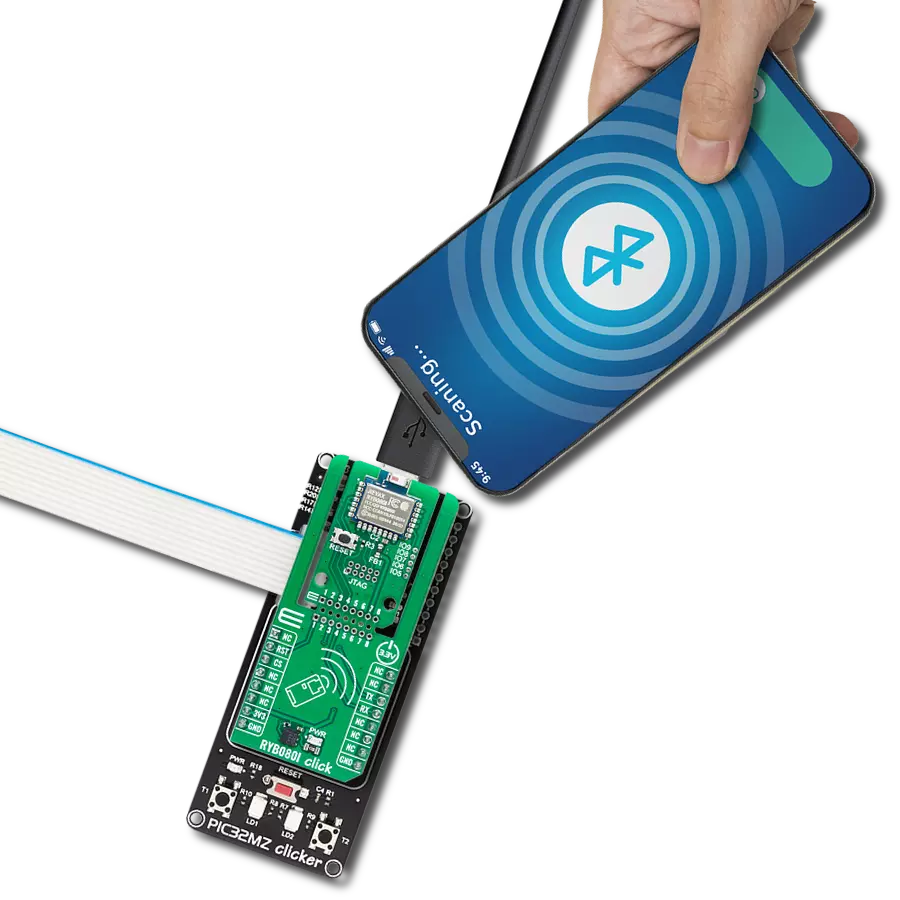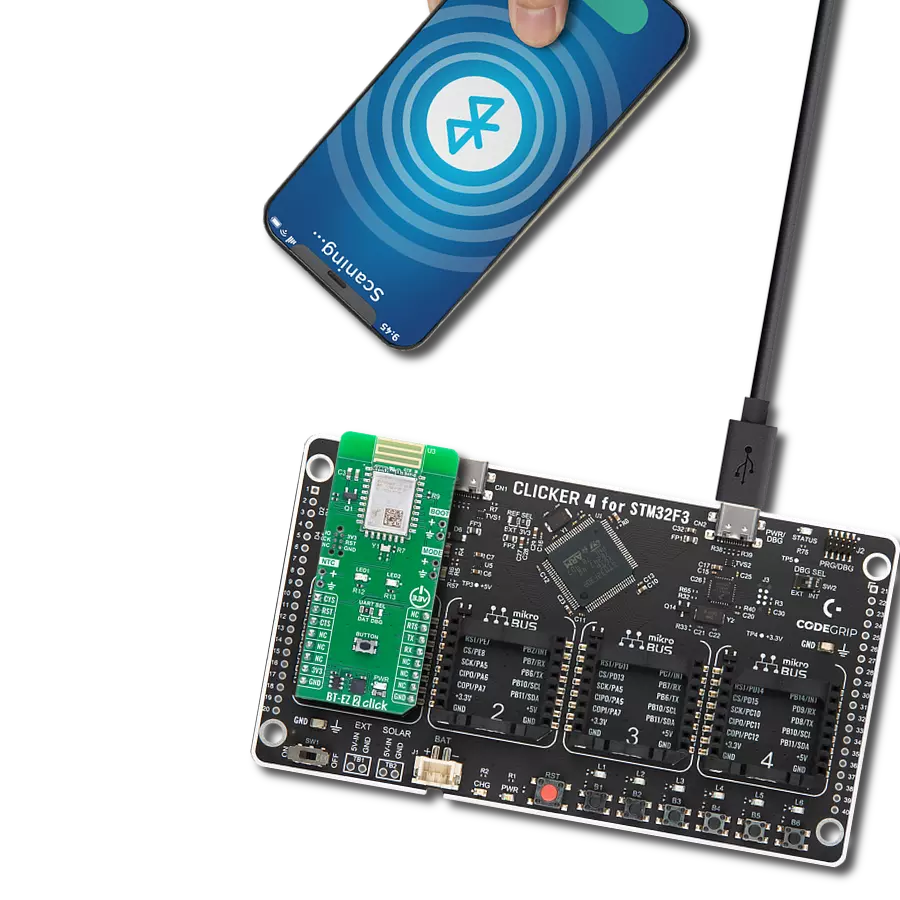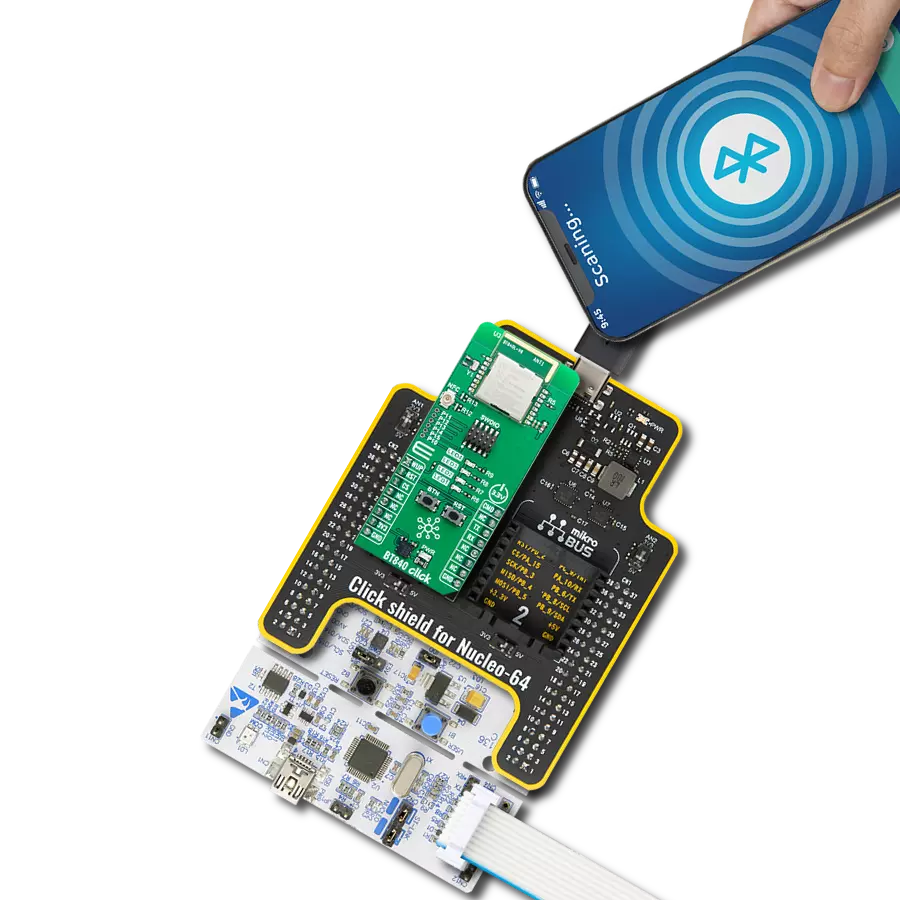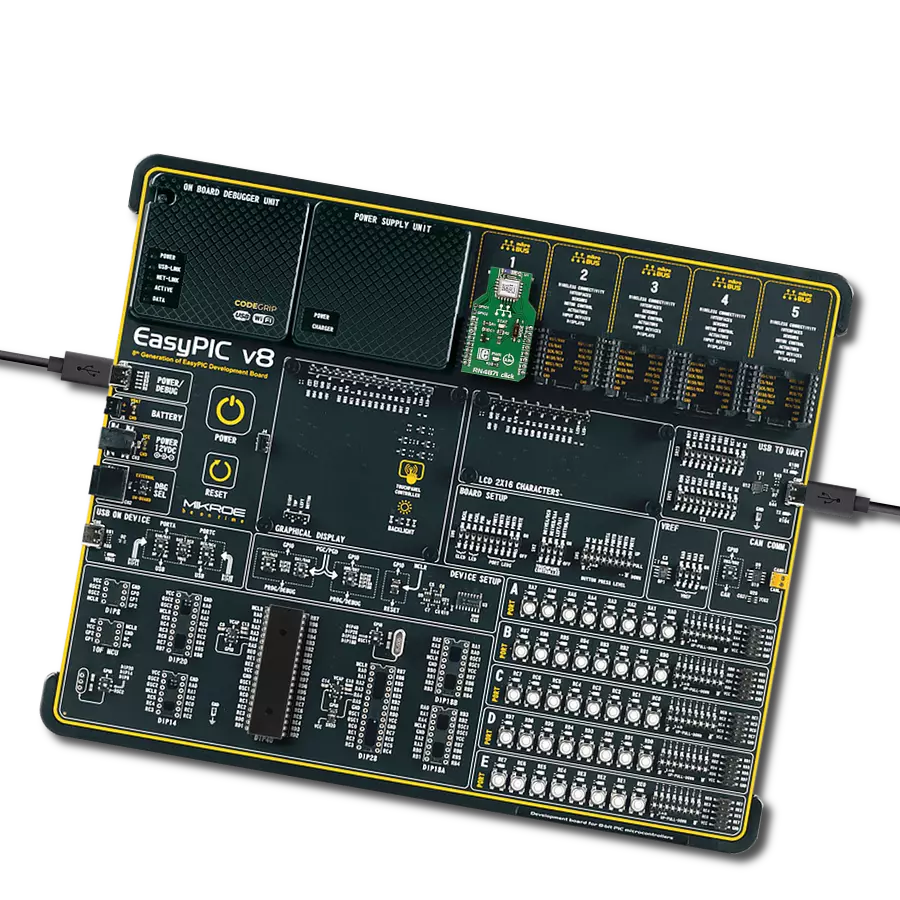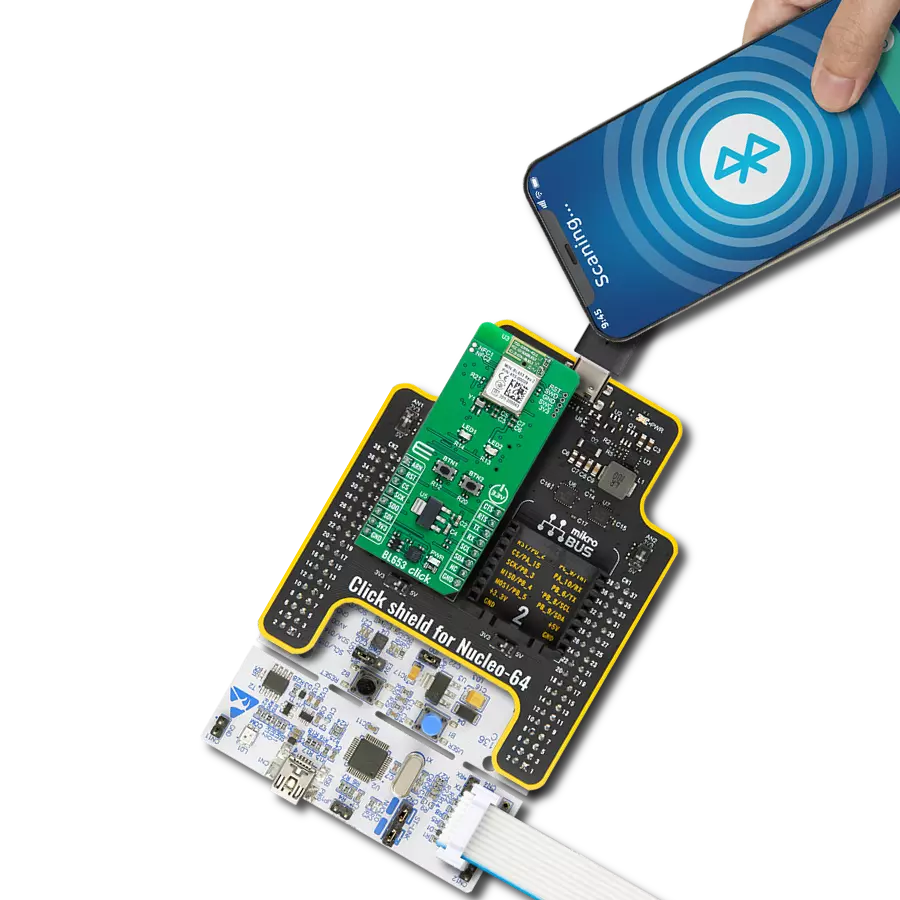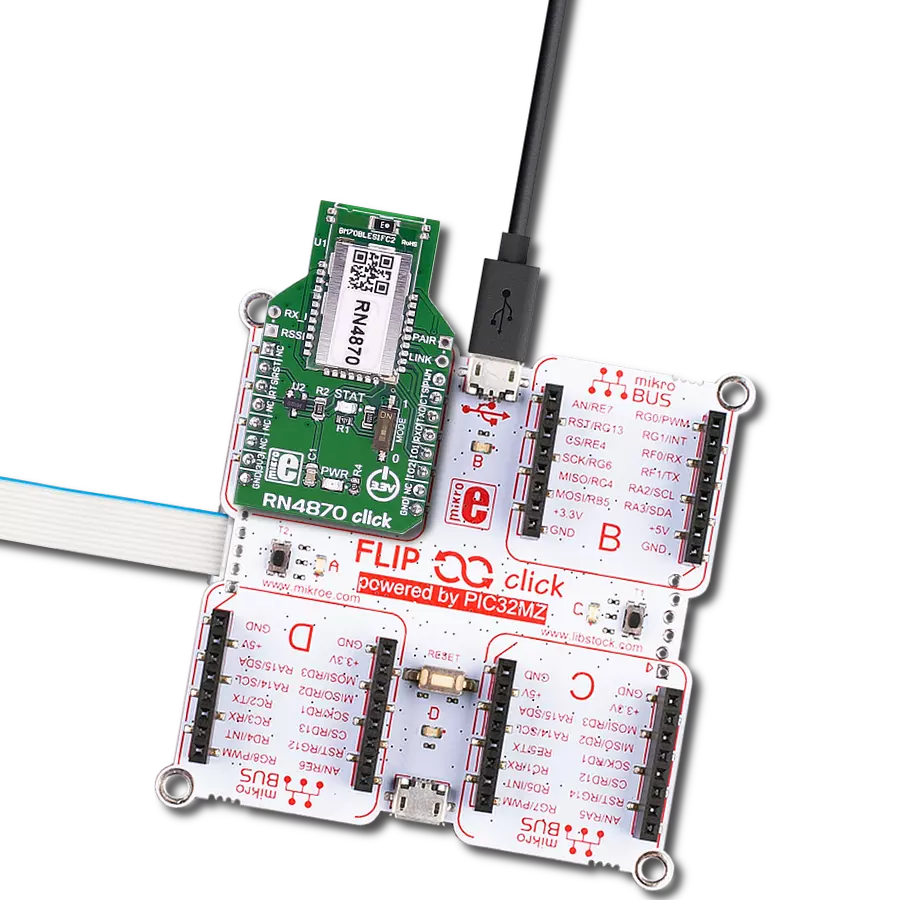体验我们先进的蓝牙解决方案,轻松连接您的设备,消除线缆的烦恼,发现无线便利的真正本质。
A
A
硬件概览
它是如何工作的?
BLE 9 Click基于BGM220P,这是一种来自Silicon Labs的射频性能蓝牙低功耗解决方案,为任何嵌入式应用提供BT/BLE连接。它支持蓝牙5.2、方向查找和蓝牙Mesh低功耗节点协议,提供业界领先的准确性。具有全球监管认证和完全可升级的软件堆栈,作为高级开发和调试工具。BGM220P模块结合了EFR32BG22无线系统芯片(SoC)、所需的去耦电容和电感、38.4 MHz和32.768 kHz晶体、RF匹配电路和集成的陶瓷板载芯片天线。BGM220P模块内的EFR32BG22 SoC包含一个Arm Cortex-M33处理核心,最多32Kb的RAM,最多512kB的闪存,以及一个2.4GHz射频收发器,提供高达8dB的输出功率。此Click板™提供增强的性
能、安全性和可靠性,以支持在蓝牙网络上运行的物联网产品。BLE 9 Click使用UART接口作为默认通信协议与MCU通信,用户也可以选择使用其他接口,如SPI和I2C,若希望自行配置模块并编写库。这款Click板™还可以在没有外部主处理器的独立SoC配置中使用。除了这些协议引脚外,此Click板™还具有标记为CTS和RTS的串行UART连接,分别路由到mikroBUS™插座的CS和INT引脚,以及提供并路由到mikroBUS™插座的RST引脚的复位引脚。一个额外的GPIO引脚,标记为IO,路由到mikroBUS™插座的PWM引脚,留给用户根据需要进行配置。板载跳线选择CS mikroBUS™引脚在SPI或UART通信引脚之间的功能。通过
将标记为CTS或CS的SMD跳线置于适当位置进行选择。BLE 9 Click底部有一个额外的头部,Mini Simplicity Debug Connector,完全支持调试和编程功能。通过此头部,用户可以使用串行线调试接口进行编程和调试,使用SWCLK和SWDIO引脚,虚拟UART COM端口和基于虚拟UART-SWD的接口也可以通过SWD接口(SWDIO、SWCLK和SWO)使用。此Click板™只能在3.3V逻辑电压水平下运行。在使用具有不同逻辑电平的MCU之前,必须进行适当的逻辑电压电平转换。此外,它还配备了一个包含函数和示例代码的库,可用作进一步开发的参考。
功能概述
开发板
PIC32MZ Clicker 是一款紧凑型入门开发板,它将 Click 板™的灵活性带给您喜爱的微控制器,使其成为实现您想法的完美入门套件。它配备了一款板载 32 位带有浮点单元的 Microchip PIC32MZ 微控制器,一个 USB 连接器,LED 指示灯,按钮,一个 mikroProg 连接器,以及一个用于与外部电子设备接口的头部。得益于其紧凑的设计和清晰易识别的丝网标记,它提供了流畅且沉浸式的工作体验,允许在任
何情况下、任何地方都能访问。PIC32MZ Clicker 开 发套件的每个部分都包含了使同一板块运行最高效的必要组件。除了可以选择 PIC32MZ Clicker 的编程方式,使用 USB HID mikroBootloader 或通过外部 mikroProg 连接器为 PIC,dsPIC 或 PIC32 编程外,Clicker 板还包括一个干净且调节过的开发套件电源供应模块。USB Micro-B 连接可以提供多达 500mA 的电流,这足以操作所有板载和附加模块。所有
mikroBUS™ 本身支持的通信方法都在这块板上,包 括已经建立良好的 mikroBUS™ 插槽、重置按钮以及若干按钮和 LED 指示灯。PIC32MZ Clicker 是 Mikroe 生态系统的一个组成部分,允许您在几分钟内创建新的应用程序。它由 Mikroe 软件工具原生支持,得益于大量不同的 Click 板™(超过一千块板),其数量每天都在增长,它涵盖了原型制作的许多方面。
微控制器概述
MCU卡片 / MCU
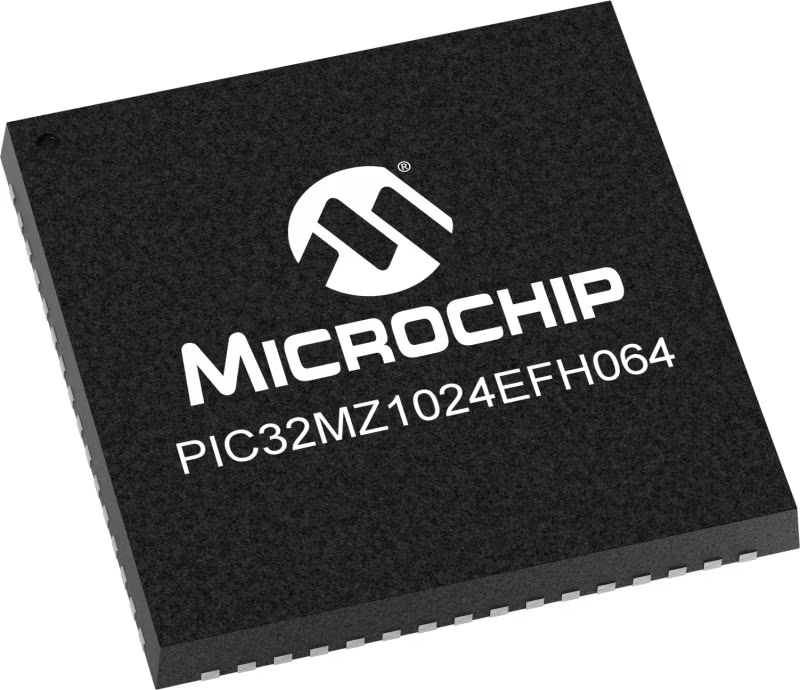
建筑
PIC32
MCU 内存 (KB)
1024
硅供应商
Microchip
引脚数
64
RAM (字节)
524288
使用的MCU引脚
mikroBUS™映射器
“仔细看看!”
Click board™ 原理图

一步一步来
项目组装
软件支持
库描述
该库包含 BLE 9 Click 驱动程序的 API。
关键功能:
ble9_adv_create_id- 此功能创建适当的ID。ble9_adv_start- 此功能启动广播。
开源
代码示例
完整的应用程序代码和一个现成的项目可以通过NECTO Studio包管理器直接安装到NECTO Studio。 应用程序代码也可以在MIKROE的GitHub账户中找到。
/*!
* @file main.c
* @brief BLE 9 Click example
*
* # Description
* This example demonstrates the use of BLE 9 Click board by processing
* the incoming data and displaying them on the USB UART.
*
* The demo application is composed of two sections :
*
* ## Application Init
* Initializes the driver and performs the Click default configuration.
*
* ## Application Task
* Reads and processes all incoming data and displays them on the USB UART.
*
* ## Additional Function
* - static void ble9_clear_app_buf ( void )
* - static err_t ble9_process ( ble9_t *ctx )
*
* <pre>
* For more information on the chip itself and the firmware on it,
* please visit the following page:
* [1] https://docs.silabs.com/bluetooth/3.1
* - Take into condideration that the library itself
* is designed to work with GSDK version 3.1.0
* If you wish to use a different version of firmware,
* take into consideration that some functions might not work.
* </pre>
*
* @author MikroE Team
*/
// ------------------------------------------------------------------- INCLUDES
#include "board.h"
#include "ble9.h"
#include "log.h"
#define PROCESS_BUFFER_SIZE 200
static ble9_t ble9;
static log_t logger;
static uint8_t app_buf[ PROCESS_BUFFER_SIZE ] = { 0 };
static int32_t app_buf_len = 0;
/**
* @brief BLE 9 clearing application buffer.
* @details This function clears memory of application buffer and reset its length.
* @note None.
*/
static void ble9_clear_app_buf ( void );
/**
* @brief BLE 9 data reading function.
* @details This function reads data from device and concatenates data to application buffer.
* @param[in] ctx : Click context object.
* See #ble9_t object definition for detailed explanation.
* @return @li @c 0 - Read some data.
* @li @c -1 - Nothing is read.
* See #err_t definition for detailed explanation.
* @note None.
*/
static err_t ble9_process ( ble9_t *ctx );
// ------------------------------------------------------ APPLICATION FUNCTIONS
void application_init ( void )
{
log_cfg_t log_cfg;
ble9_cfg_t cfg;
/**
* Logger initialization.
* Default baud rate: 115200
* Default log level: LOG_LEVEL_DEBUG
* @note If USB_UART_RX and USB_UART_TX
* are defined as HAL_PIN_NC, you will
* need to define them manually for log to work.
* See @b LOG_MAP_USB_UART macro definition for detailed explanation.
*/
LOG_MAP_USB_UART( log_cfg );
log_init( &logger, &log_cfg );
log_info( &logger, "---- Application Init ----" );
Delay_ms ( 100 );
// Click initialization.
ble9_cfg_setup( &cfg );
BLE9_MAP_MIKROBUS( cfg, MIKROBUS_1 );
ble9_init( &ble9, &cfg );
Delay_ms ( 1000 );
// Clear app buffer
ble9_process ( &ble9 );
ble9_clear_app_buf( );
Delay_ms ( 100 );
if ( BLE9_OK == ble9_sys_get_version ( &ble9 ) )
{
log_printf( &logger, "--- System Version ---\r\n" );
log_printf( &logger, " Major: 0x%.4X\r\n", ble9.ble9_version.version_major );
log_printf( &logger, " Minor: 0x%.4X\r\n", ble9.ble9_version.version_minor );
log_printf( &logger, " Patch: 0x%.4X\r\n", ble9.ble9_version.version_patch );
log_printf( &logger, " Build: 0x%.4X\r\n", ble9.ble9_version.version_build );
log_printf( &logger, " Bootloader: 0x%.8LX\r\n", ble9.ble9_version.version_bootloader );
log_printf( &logger, " Hash: 0x%.8LX\r\n", ble9.ble9_version.version_hash );
log_printf( &logger, "------------------------\r\n" );
}
log_printf( &logger, "Creating advertising point...\r\n" );
Delay_ms ( 100 );
ble9_adv_create_id ( &ble9 );
log_printf( &logger, "Starting module advertising...\r\n" );
Delay_ms ( 100 );
ble9_adv_start ( &ble9, BLE9_ADVERTISER_MODE_DISCOVERABLE_GENERAL,
BLE9_ADVERTISER_MODE_CONNECTABLE_SCANNABLE );
log_printf( &logger, "The module has been configured.\r\n" );
Delay_ms ( 100 );
}
void application_task ( void )
{
ble9_process ( &ble9 );
if ( app_buf_len > 0 )
{
for ( uint16_t cnt = 0; cnt < app_buf_len; cnt++ )
{
log_printf( &logger, "%.2X ", ( uint16_t ) app_buf[ cnt ] );
}
ble9_clear_app_buf( );
}
}
int main ( void )
{
/* Do not remove this line or clock might not be set correctly. */
#ifdef PREINIT_SUPPORTED
preinit();
#endif
application_init( );
for ( ; ; )
{
application_task( );
}
return 0;
}
static void ble9_clear_app_buf ( void )
{
memset( app_buf, 0, app_buf_len );
app_buf_len = 0;
}
static err_t ble9_process ( ble9_t *ctx )
{
uint8_t rx_buf[ PROCESS_BUFFER_SIZE ] = { 0 };
int32_t rx_size = 0;
rx_size = ble9_generic_read( ctx, rx_buf, PROCESS_BUFFER_SIZE );
if ( rx_size > 0 )
{
int32_t buf_cnt = app_buf_len;
if ( ( ( app_buf_len + rx_size ) > PROCESS_BUFFER_SIZE ) && ( app_buf_len > 0 ) )
{
buf_cnt = PROCESS_BUFFER_SIZE - ( ( app_buf_len + rx_size ) - PROCESS_BUFFER_SIZE );
memmove ( app_buf, &app_buf[ PROCESS_BUFFER_SIZE - buf_cnt ], buf_cnt );
}
for ( int32_t rx_cnt = 0; rx_cnt < rx_size; rx_cnt++ )
{
if ( rx_buf[ rx_cnt ] )
{
app_buf[ buf_cnt++ ] = rx_buf[ rx_cnt ];
if ( app_buf_len < PROCESS_BUFFER_SIZE )
{
app_buf_len++;
}
}
}
return BLE9_OK;
}
return BLE9_ERROR;
}
// ------------------------------------------------------------------------ END

















